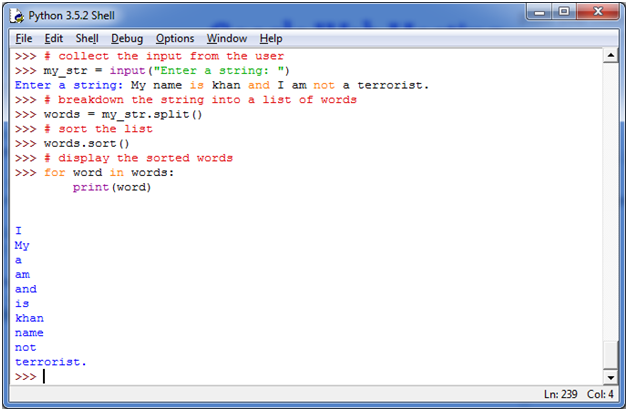

To sort elements from higher to lower, you pass the reverseTrue argument to the sort () method like this: list. In other words, it places the lower elements before the higher ones. If you want a function to return the sorted list rather than change the original list, use sorted().Įxample 1: Sort a given list # vowels listĮmployees. By default, the sort () method sorts the elements of a list using the less-than operator ( < ). The sort() method doesn't return any value. key - function that serves as a key for the sort comparison The sort() method works by comparing the elements of the list to each other and rearranging them in ascending order.There is also a sorted() built-in function that builds a new sorted list. sort() method sorts the elements of a list in ascending or descending order using the default < comparisons operator between items.

reverse - If True, the sorted list is reversed (or sorted in Descending order) Python lists have a built-in list.sort() method that modifies the list in-place.By default, the method will sort the list in ascending order. When we call sort() method, it traverses the list. The Python list sort () method allows programmers to sort data in ascending and descending order. output: Help on built-in function sorted in. list.reverse() Reverse the elements of the list in place. Note: The simplest difference between sort() and sorted() is: sort() changes the list directly and doesn't return any value, while sorted() doesn't change the list and returns the sorted list.īy default, sort() doesn't require any extra parameters. The sort() method performs the sorting of list elements in ascending, descending or user defined order. you can look them up in pythons documentation, or you can call the function help: help(sorted) help(list.sort). list.sort(, keyNone, reverseFalse) Sort the items of the list in place (the arguments can be used for sort customization, see sorted () for their explanation). The syntax of the sort() method is: list.sort(key=., reverse=.)Īlternatively, you can also use Python's built-in sorted() function for the same purpose. If you want to sort in a descending order, all you have to do is add the parameter reverse True to either the sort or sorted functions.


 0 kommentar(er)
0 kommentar(er)
